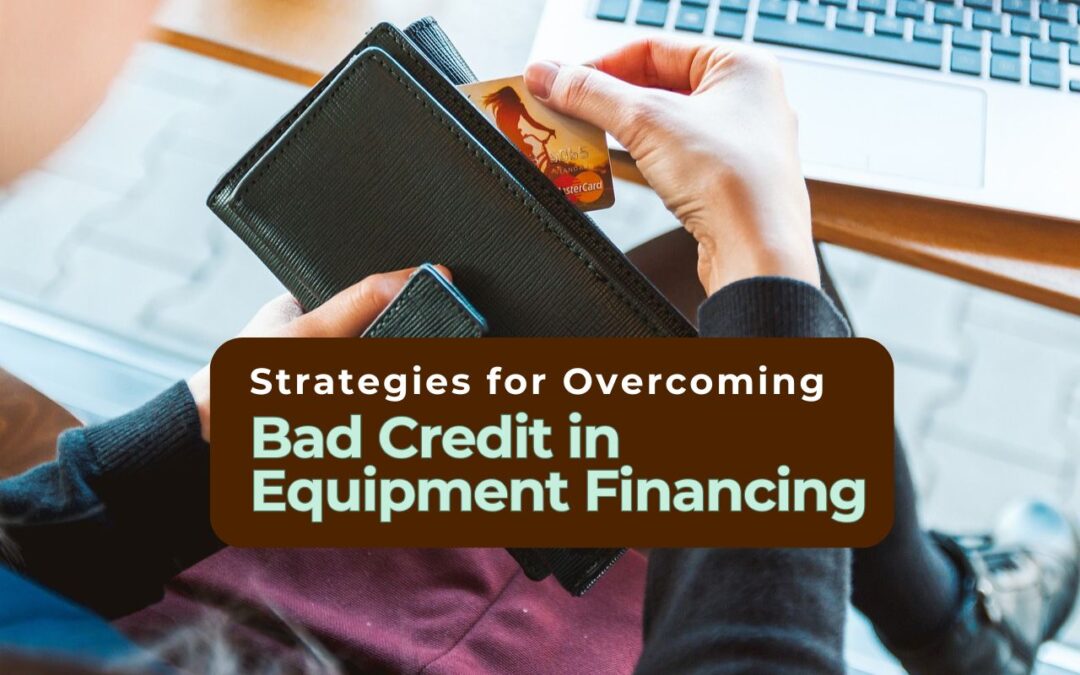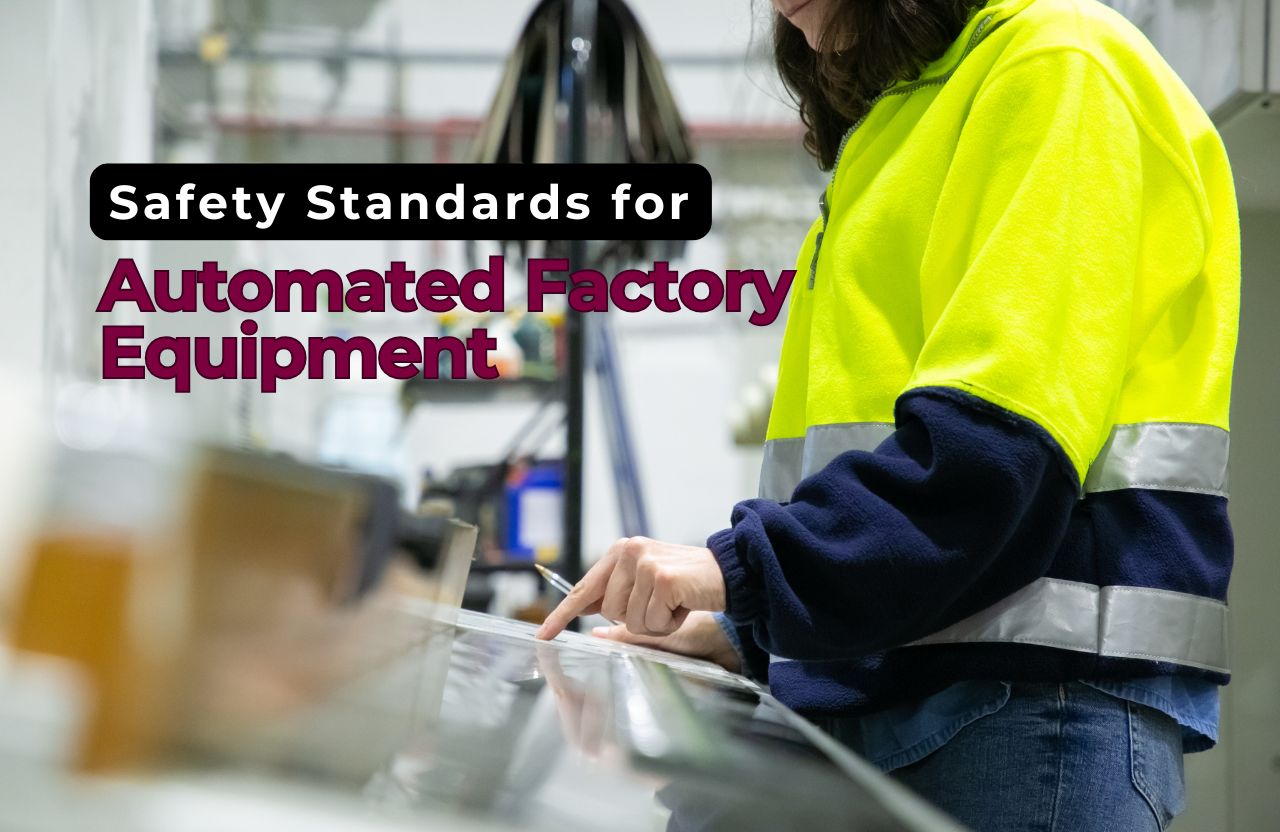You require equipment financing but have concerns about your credit score? You’re not alone.
Growing your business with new equipment becomes difficult when you have bad credit. But here’s the thing…
It doesn’t have to stop you completely.
The current financial market provides numerous options for obtaining equipment financing for people with suboptimal credit records. I will teach you the exact methods you need to navigate equipment financing options with bad credit.
Inside This Guide:
- Understanding Bad Credit Equipment Financing
- Top Strategies for Securing Equipment with Bad Credit
- Alternative Financing Solutions
- How to Improve Your Credit for Better Terms
- Real-World Success Stories
Understanding Bad Credit Equipment Financing
Bad credit equipment financing includes funding options for businesses with credit scores below the standard “good” threshold for traditional lenders which usually stands at 650. These options are more expensive but enable businesses to access vital equipment when traditional bank loans are not accessible.
Financial experts predict that the equipment finance industry will expand by 2.4% in 2025 to reach a market size exceeding $1.4 trillion. The expansion of lenders opens up competitive business opportunities for companies facing credit obstacles.
Why is this important? In 2023 financing for equipment and software purchases was utilized by roughly 82% of businesses. Many business operations depend on equipment which makes waiting for better credit terms a non-viable strategy.
Before we dive into strategies, you should understand that bad credit equipment financing solutions do exist from specialized lenders that focus on the value of the equipment and your business’s cash flow rather than just your credit score. Specialized lenders understand that businesses’ financial conditions extend beyond their credit scores.
Top Strategies for Securing Equipment with Bad Credit
1. Focus on Cash Flow Documentation
Keep your business’s cash flow front and center in negotiations when your credit score lacks strength. Lenders require proof of your ability to manage payments despite any previous credit difficulties you have faced.
How to implement this strategy:
- Collect your bank statements from the past 3 to 6 months that demonstrate regular income.
- Develop cash flow forecasts to demonstrate increased revenue from the acquisition of new equipment.
- Provide documentation of existing contracts and purchase orders that prove your business operations remain active.
Alternative lenders give more importance to robust current cash flow compared to previous credit problems. This approach proves effective for businesses that have resolved previous financial challenges but still display credit score damage.
2. Offer a Larger Down Payment
Reducing your financing requirement serves as an easy method to mitigate bad credit risk.
Consider this approach:
- Negotiate for a down payment between 20% and 30% as opposed to the conventional rate of just 10%
- Leverage your company’s savings or income streams to boost your initial payment.
- Generate funds for your down payment by selling equipment that you don’t currently use.
A bigger down payment diminishes the lender’s risk exposure which frequently results in loan approval despite existing credit problems. This approach usually results in improved financing terms while decreasing total expenses.
3. Leverage Equipment Value
Equipment financing arrangements use the equipment as collateral which assists in mitigating credit worries.
Maximize this advantage by:
- Select durable equipment that will retain strong resale value over time.
- Submit thorough information regarding the anticipated useful life span of the equipment.
- Show lenders how the equipment selected will create income streams.
Businesses can work with online lenders that handle bad credit cases because they provide financing solutions for businesses that maintain at least a 575 credit score. These loans feature higher interest rates and shorter repayment periods but focusing on valuable revenue-generating equipment can aid in getting approval.
4. Seek Equipment-Specific Lenders
Different lenders offer varying levels of service and terms for equipment financing. Certain lenders who focus on particular industries possess better knowledge about the potential value of specific equipment compared to general lending institutions.
How to find specialized lenders:
- Look for lenders who specialize in financing equipment for your particular industry.
- Inquire with equipment dealers about their recommended financing partners.
- Reach out to industry associations which might know about lenders who offer specialized financing options.
Industry-specific lenders have knowledge of how specific equipment functions and maintains its value to support business success. Industry-specific lenders apply their specialized knowledge to enable borrowers to access more lenient credit requirements.
Alternative Financing Solutions
Equipment Leasing vs. Loans
Businesses can gain access to needed equipment through leasing options when traditional loans are unavailable.
Benefits of leasing with bad credit:
- Lower approval requirements than loans
- Smaller monthly payments
- Potential tax advantages
- Option to upgrade equipment at lease end
Businesses struggling with credit ratings can find equipment lease approval more probable since leasing companies prioritize equipment value over credit scores.
Vendor Financing Programs
Equipment dealers and manufacturers provide specialized financing options that often surpass the flexibility of traditional bank loans.
How to leverage vendor financing:
- Explore in-house financing options when you are shopping for equipment
- Compare vendor terms with other financing options
- Use your intent to buy from their company as a bargaining chip during negotiations.
Equipment vendors have an incentive to sell their products and often take extra steps to help customers obtain financing solutions even when they have credit challenges.
How to Improve Your Credit for Better Terms
Work on enhancing your credit profile to benefit future needs while you explore your current financing options.
Short-Term Improvement Strategies
- Pay all current bills on time
- Keep credit card debt below 30% of your available credit limits.
- Dispute any credit report errors
- Contact your present creditors to inquire if they will grant goodwill adjustments for your previous late payment records.
Long-Term Credit Building
- Establish separate business credit accounts
- Partner with suppliers who provide reports to business credit bureaus.
- Create trade lines which offer payment terms of net-30 or net-60.
- Consider a small, secured business credit card
More than 40% of businesses intend to increase their purchases of equipment and software during the year 2025. Future investments will be more accessible if you work on improving your credit at this moment.
Real-World Success Stories
Manufacturing Company Overcomes Credit Challenges
This manufacturing business required $75,000 to purchase essential production equipment while holding a credit score of 590. After being rejected by three banks, they:
- The company prepared documentation showing that the new equipment would boost production capacity by 35%.
- The business presented a down payment worth 25% of its current savings.
- They chose a specialized lender with industry knowledge who provided equipment financing.
The result? They received financing approval with a marginally higher interest rate but their monthly payments remained manageable thanks to the increased production revenue.
Wrapping It All Up
A poor credit score should not eliminate your ability to secure equipment financing. Businesses can secure necessary equipment for growth by prioritizing cash flow management along with larger down payments, while selecting valuable equipment and using alternative financing methods to tackle credit obstacles.
Remember these key points:
- Focus on demonstrating strong current business performance
- Leverage the value of the equipment itself
- Explore industry-specific and alternative financing options
- Develop your credit status to meet future equipment financing requirements.
The upcoming equipment acquisition plans of more than 40% of businesses for 2025 underline the importance of establishing an equipment financing strategy now despite your present credit position.
Ready to explore your options? Gather your financial documents and research equipment-specific lenders to be ready to explain your full business financial situation beyond what your credit score displays.












